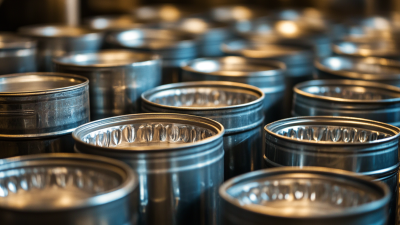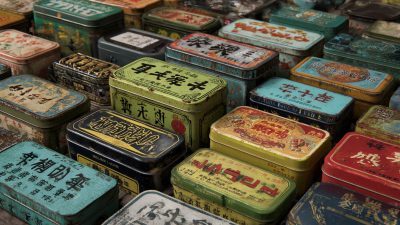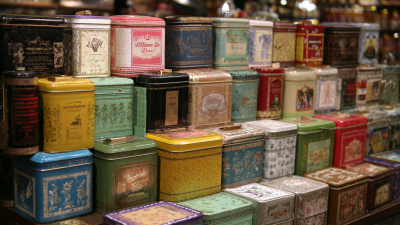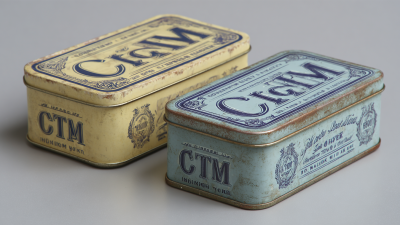 +817089618688
+817089618688
Free Standard Samples can be provided for you to check the quality.
Leave Your Message
In recent years, the growing emphasis on sustainability has led to innovative approaches in packaging solutions, with Tin Boxes emerging as a prominent option. These versatile containers not only enhance product appeal but also cater to eco-conscious consumers and brands alike.
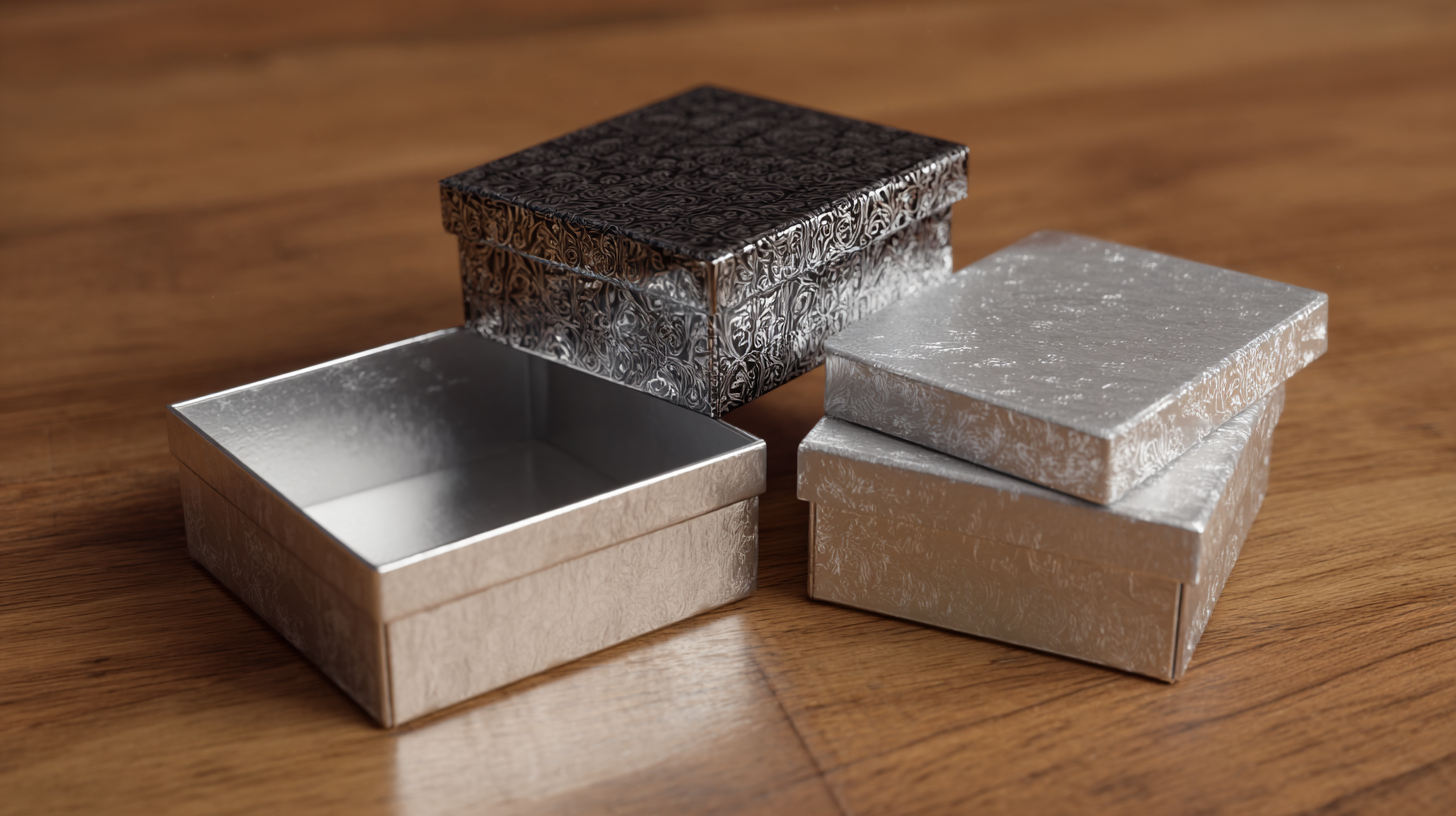 Tin Boxes are highly durable, recyclable, and can be aesthetically designed to reflect a brand's identity while minimizing environmental impact. Their adaptability makes them suitable for a wide range of products, from food items to cosmetics and gifts. As businesses and consumers increasingly prioritize sustainable practices, understanding the benefits and applications of Tin Boxes is essential for both effective branding and contributing to a greener planet.
This exploration will guide you through the various ways Tin Boxes can be utilized within sustainable packaging strategies, illustrating their potential in promoting environmental responsibility without compromising style or function.
Tin Boxes are highly durable, recyclable, and can be aesthetically designed to reflect a brand's identity while minimizing environmental impact. Their adaptability makes them suitable for a wide range of products, from food items to cosmetics and gifts. As businesses and consumers increasingly prioritize sustainable practices, understanding the benefits and applications of Tin Boxes is essential for both effective branding and contributing to a greener planet.
This exploration will guide you through the various ways Tin Boxes can be utilized within sustainable packaging strategies, illustrating their potential in promoting environmental responsibility without compromising style or function.
The rise of tin boxes as eco-friendly packaging alternatives is increasingly noteworthy in the sustainable packaging sector. With the global sustainable packaging market projected to generate an impressive USD 301.8 billion by 2025 and reach around USD 530.4 billion by 2035, brands are actively seeking materials that align with eco-conscious consumer preferences. In this context, tin boxes represent a versatile solution, marrying durability and recyclability, thus contributing to reduced environmental impact while satisfying the growing demand for sustainable packaging.

Moreover, the expansion of the packaging market highlights significant growth areas, particularly in the food sector. For instance, the Europe Food Cans Market, projected to grow from USD 8.73 billion in 2024 to USD 10.82 billion by 2033, illustrates a broader trend towards efficient and sustainable packaging solutions. As businesses adapt to these changing dynamics, tin boxes are emerging as a preferred choice, offering not only protection and preservation for food products but also showcasing a commitment to reducing plastic waste, ultimately enhancing brand appeal in a competitive market landscape.
Tin boxes have rapidly gained popularity as a unique packaging solution, particularly among younger consumers who prioritize innovative designs and sustainability. As trends shift towards personalization, brands are increasingly recognizing the potential of tin boxes to elevate product appeal. Their versatility allows for creative customizations, which can resonate with individual tastes, making them an attractive option in competitive markets.

One notable aspect of tin boxes is their ability to combine functionality with aesthetic appeal. They can be crafted into various shapes and sizes, allowing brands to stand out visually on retail shelves. This was evident at the recent industry forum, where the focus on trend-driven consumer goods highlighted how design can significantly influence purchasing decisions. Brands that incorporate eye-catching tin packaging not only enhance their product's appeal but also align with the modern consumer’s desire for memorable unboxing experiences.
Tips for Leveraging Tin Boxes in Packaging:
- Consider unique shapes and custom artwork to attract attention.
- Use eco-friendly processes to appeal to environmentally conscious consumers.
- Think about the product lifecycle; tin boxes are reusable, adding value beyond initial purchase.
The cost-effectiveness of tin boxes in sustainable packaging has garnered attention as industries seek eco-friendly alternatives without compromising on quality. According to a report by Smithers Pira, the global sustainable packaging market is projected to reach $500 billion by 2027, with metal packaging, including tin boxes, expected to play a significant role due to their recyclability and durability.
Tin boxes can be reused multiple times and have a lower carbon footprint compared to single-use plastic packaging.
Furthermore, the initial investment in tin packaging may be higher than traditional options, but their long-term benefits can outweigh these costs. Data from the European Metal Packaging Alliance indicates that metal packaging has a recycling rate of 75%, while other materials lag behind. By opting for tin boxes, companies not only reduce waste but also enhance their brand's appeal to environmentally-conscious consumers. This dual impact on sustainability and economics positions tin boxes as a favorable choice for businesses aiming to align with green initiatives while maintaining cost efficiency.
The growing emphasis on sustainability in packaging has led to a comparative analysis between tin boxes and traditional packaging materials. Tin boxes stand out for their recyclability and durability, making them an appealing alternative to commonly used plastics and paper products. Unlike plastic, which often contributes to environmental pollution, tin boxes can be reused multiple times and are fully recyclable, reducing waste in landfills. Moreover, their ability to create an airtight seal contributes to extended shelf life for various products, a critical factor in maintaining quality.
Traditional packaging materials such as paper and plastic, while functional, often lack the protective qualities of metal containers. For instance, paper-based packaging is susceptible to moisture and can compromise product integrity. In contrast, tin boxes provide robust protection from environmental factors, ensuring that contents remain fresh for longer periods. Additionally, the aesthetic appeal of tin packaging enhances product presentation, often leading to increased consumer preference. As companies strive for sustainable solutions, the versatility of tin boxes positions them as a strong contender in the evolving packaging landscape.
The role of tin boxes in circular economy models is gaining significant attention as businesses and consumers alike seek sustainable alternatives to conventional packaging. Tin boxes are highly durable and can be recycled indefinitely without degrading their quality, making them an ideal choice for a circular economy. This longevity aligns perfectly with the principles of sustainability, where materials are reused and recycled rather than disposed of after a single use. By incorporating tin boxes into their packaging strategies, companies can significantly reduce waste and support resource conservation efforts.
Moreover, the adaptability of tin boxes facilitates their integration into various industries, from food and beverages to cosmetics and gifts. As brands increasingly prioritize environmental responsibility, using tin boxes not only enhances product appeal but also reinforces a commitment to sustainability. Future trends indicate that companies will innovate further in the design and functionality of tin packaging, leading to more creative and eco-friendly solutions. As the market shifts towards these circular models, the use of tin boxes will likely expand, proving essential in meeting both consumer demand and regulatory expectations for sustainable practices.
| Dimension | Description | Current Trends | Future Outlook |
|---|---|---|---|
| Material Lifespan | Tin boxes are durable and can last for decades when maintained properly. | Increasing demand for long-lasting packaging options. | Potential to integrate bioplastics or upgrades to enhance lifespan. |
| Recyclability | Tin is 100% recyclable, contributing to a circular economy. | Increased consumer awareness and demand for recyclable materials. | Advancements in recycling technologies to enhance the closed-loop system. |
| Design Flexibility | Tin boxes can be customized in various shapes and sizes for branding. | Growth in personalized packaging trends. | Enhanced printing technologies for intricate designs. |
| Sustainability Practices | Manufacturing processes increasingly adopt eco-friendly practices. | Shift toward sustainable sourcing of tin materials. | Potential for full lifecycle assessments in production. |
| Consumer Preference | Growing inclination towards environmentally friendly packaging. | Increase in purchases of products in sustainable packaging. | Evolving consumer trends towards minimalism and reusability. |

